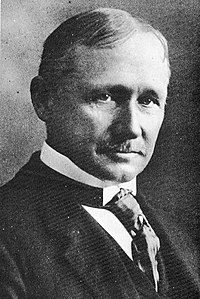This week’s lecture and chapter looks at three classical approaches of an organisation’s structure: Henri Fayol’s Theory of Classical Management, Weber’s Theory of Bureaucracy and Taylor’s Theory of Scientific Management.
Henri Fayol’s Theory of Classical Management focuses on a more traditional management structure that comprises ‘elements of planning, commanding, coordinating, controlling and organising’ Miller (2009). His theory also consists of principles for ‘highly structured and hierarchical’ management, power relationships, appropriate rewarding and proper attitudes of people within an organisation. Fayol places great emphasis on efficiency and productivity in the organisation and his theory is often applied to the fast food chain and manufacturing sector.
Max Weber’s Theory of Bureaucracy is the most interesting among the three theories as it features an ‘idealized type of organisation’ Miller (2009) where it emphasizes on a closed system that isolates itself from influences from the surrounding environment that may disrupt its function. Similar to a governmental system, Weber focuses on rules and rational legal authority within an organisation. Weber goes on to explain three possible grounds of authority: Traditional authority (president of a team or director of a company), Charismatic authority (individual’s personality and ability to attract or influence others), Rational-legal authority (power from expertise, rationality and obedience to rules) This theory is more suitable for military organisations.
Frederick Taylor’s Theory of Scientific Management concentrates on the ‘strict division between workers and managers’ (Miller, 2009) Physical labor is provided by the workers while mental planning is done by the managers.
The “mechanical” communication processes in organisations can be studied by:
(1) Communication content (work-related or social)
(2) Direction of communication flow (upward, horizontal)
(3) Channel of communication (face to face, computer mediated)
(4) Style of communication (formal with official address, informal, slang)
My group mates and I discussed the Creamy Creations Takeover by Burger Barn case study to prepare for the upcoming tutorial. Although the Creamy Creations’ business were generating profits after the takeover, the question prevail whether its original name should be kept. To measure customers’ satisfaction on the dishes served, surveys may be conducted. Results from the survey would also determine the productivity rate of the niche Small Medium Enterprise (SME).
References:
Miller, K 2008, Organizational Communication: approaches and processes, 5th edn, Wadsworth Cengage Learning, Boston, MA.



No comments:
Post a Comment